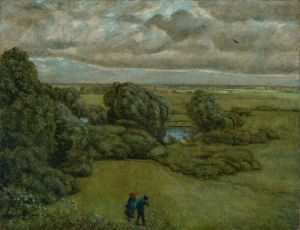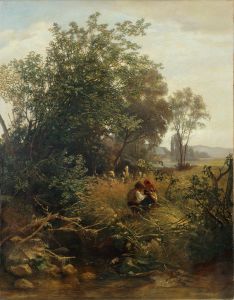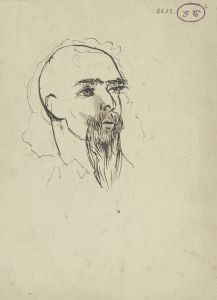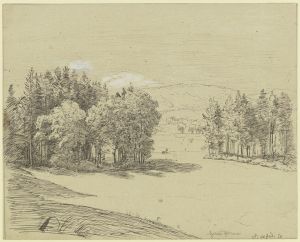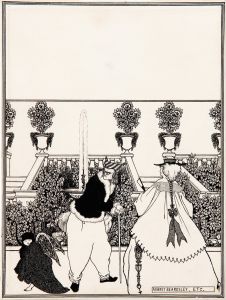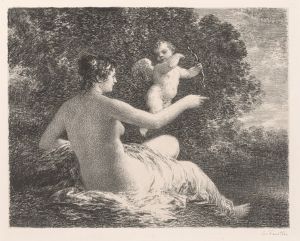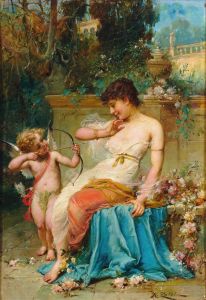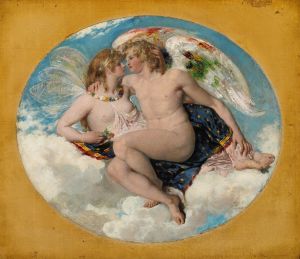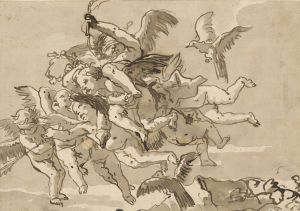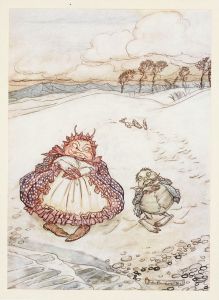
Venus auf dem Delphin
A hand-painted replica of Hans Thoma’s masterpiece Venus auf dem Delphin, meticulously crafted by professional artists to capture the true essence of the original. Each piece is created with museum-quality canvas and rare mineral pigments, carefully painted by experienced artists with delicate brushstrokes and rich, layered colors to perfectly recreate the texture of the original artwork. Unlike machine-printed reproductions, this hand-painted version brings the painting to life, infused with the artist’s emotions and skill in every stroke. Whether for personal collection or home decoration, it instantly elevates the artistic atmosphere of any space.
Hans Thoma was a German painter born on October 2, 1839, in Bernau in the Black Forest, and he became one of the most significant figures in the German art scene of the late 19th and early 20th centuries. Thoma's work is known for its detailed realism and often incorporates elements of German folklore and mythology. One of his notable works is "Venus auf dem Delphin" (Venus on the Dolphin), which reflects his unique style and thematic interests.
"Venus auf dem Delphin" is a painting that depicts the Roman goddess Venus riding a dolphin. This theme is a classical one, often explored in art to symbolize beauty, love, and the connection between the divine and the natural world. The image of Venus on a dolphin has its roots in ancient mythology, where Venus (or Aphrodite in Greek mythology) is often associated with the sea and marine creatures, symbolizing her birth from the sea foam.
Thoma's interpretation of this theme is distinctive due to his characteristic style, which blends realism with a touch of romanticism. His attention to detail and the serene expression of Venus contribute to the painting's tranquil and harmonious atmosphere. The use of color and light in the painting is typical of Thoma's work, where he often employed a soft palette to evoke a sense of calm and beauty.
Hans Thoma was influenced by various art movements and styles throughout his career. Initially, he was inspired by the works of the Old Masters, which is evident in his meticulous attention to detail and composition. Later, he was influenced by the Romantic movement and the Symbolists, which can be seen in the thematic elements of his work, including "Venus auf dem Delphin."
Thoma's career was marked by a gradual rise to prominence. He studied at the Karlsruhe Academy of Fine Arts and later moved to Düsseldorf and Munich, where he was exposed to different artistic influences. His work gained recognition at various exhibitions, and he eventually became a professor at the Karlsruhe Academy. Thoma's art was celebrated for its ability to capture the essence of German landscapes and folklore, and he became a beloved figure in German art.
"Venus auf dem Delphin" is a testament to Thoma's skill in blending mythological themes with his unique artistic vision. The painting reflects his ability to convey a sense of timeless beauty and tranquility, characteristics that are prevalent in much of his work. Thoma's contribution to art extends beyond his paintings; he was also involved in printmaking and illustration, further showcasing his versatility as an artist.
Hans Thoma passed away on November 7, 1924, in Karlsruhe, Germany. His legacy continues to be celebrated, and his works are held in various collections and museums, reflecting his enduring impact on the art world. "Venus auf dem Delphin" remains a significant piece within his oeuvre, exemplifying his mastery of both technique and thematic expression.






